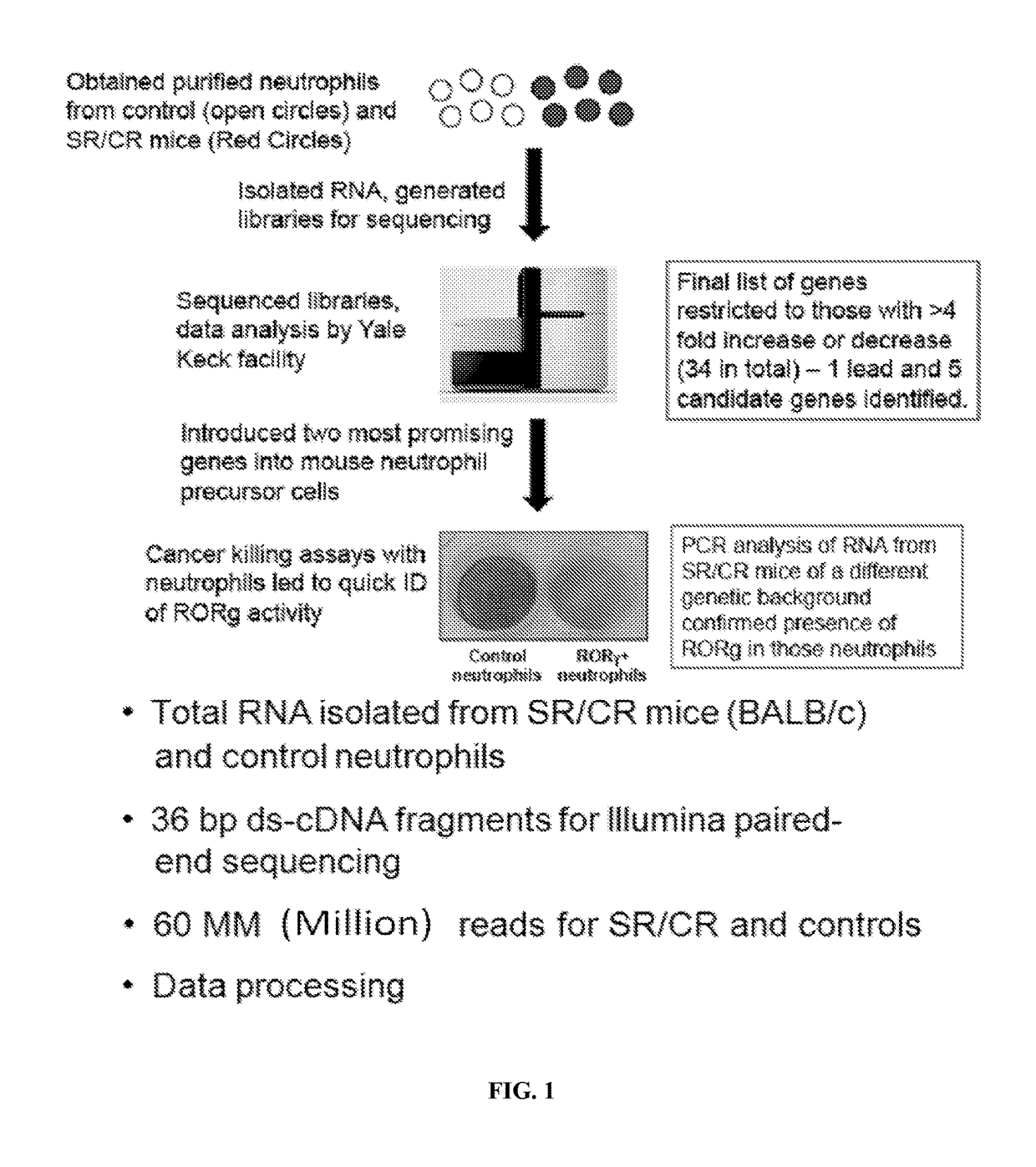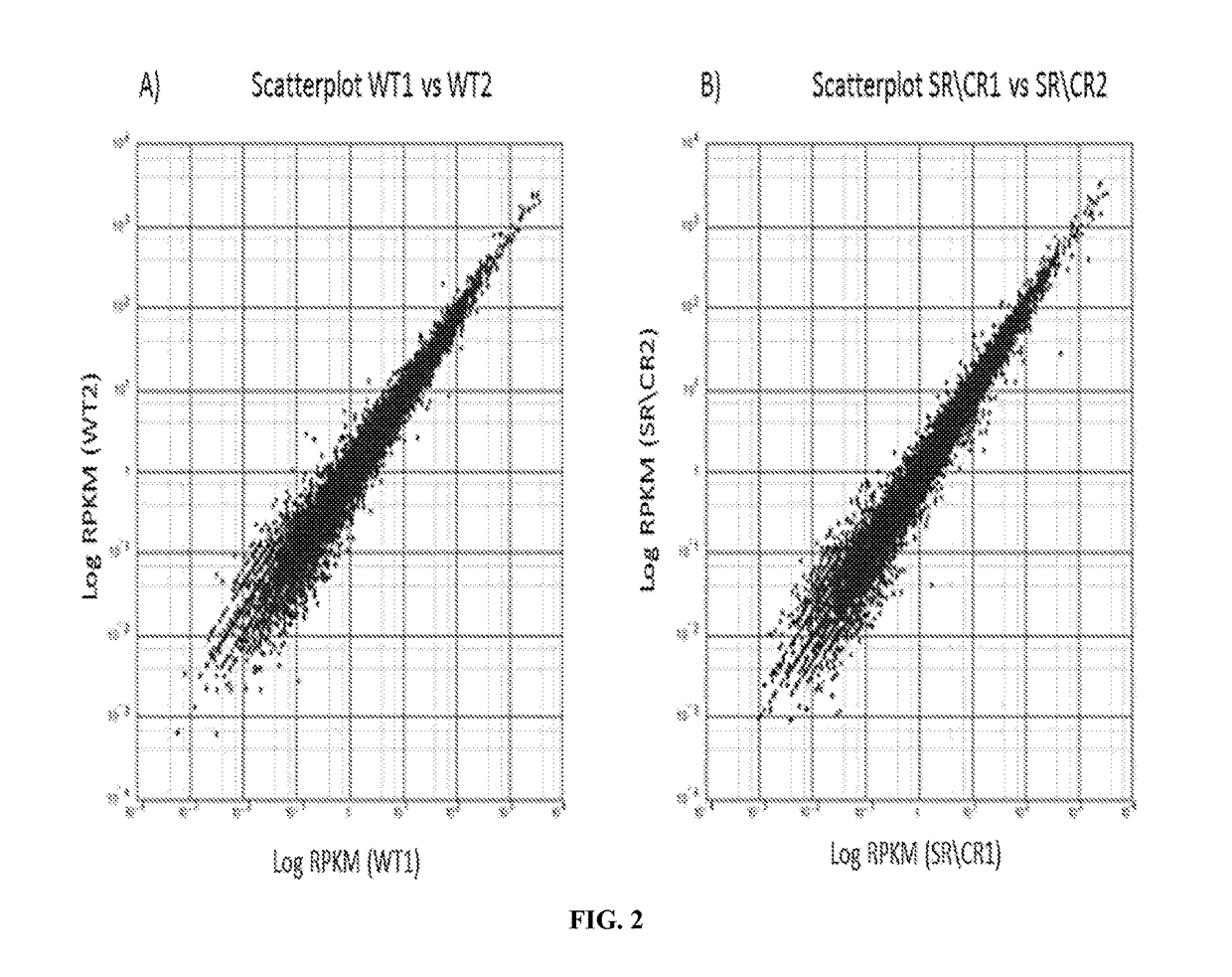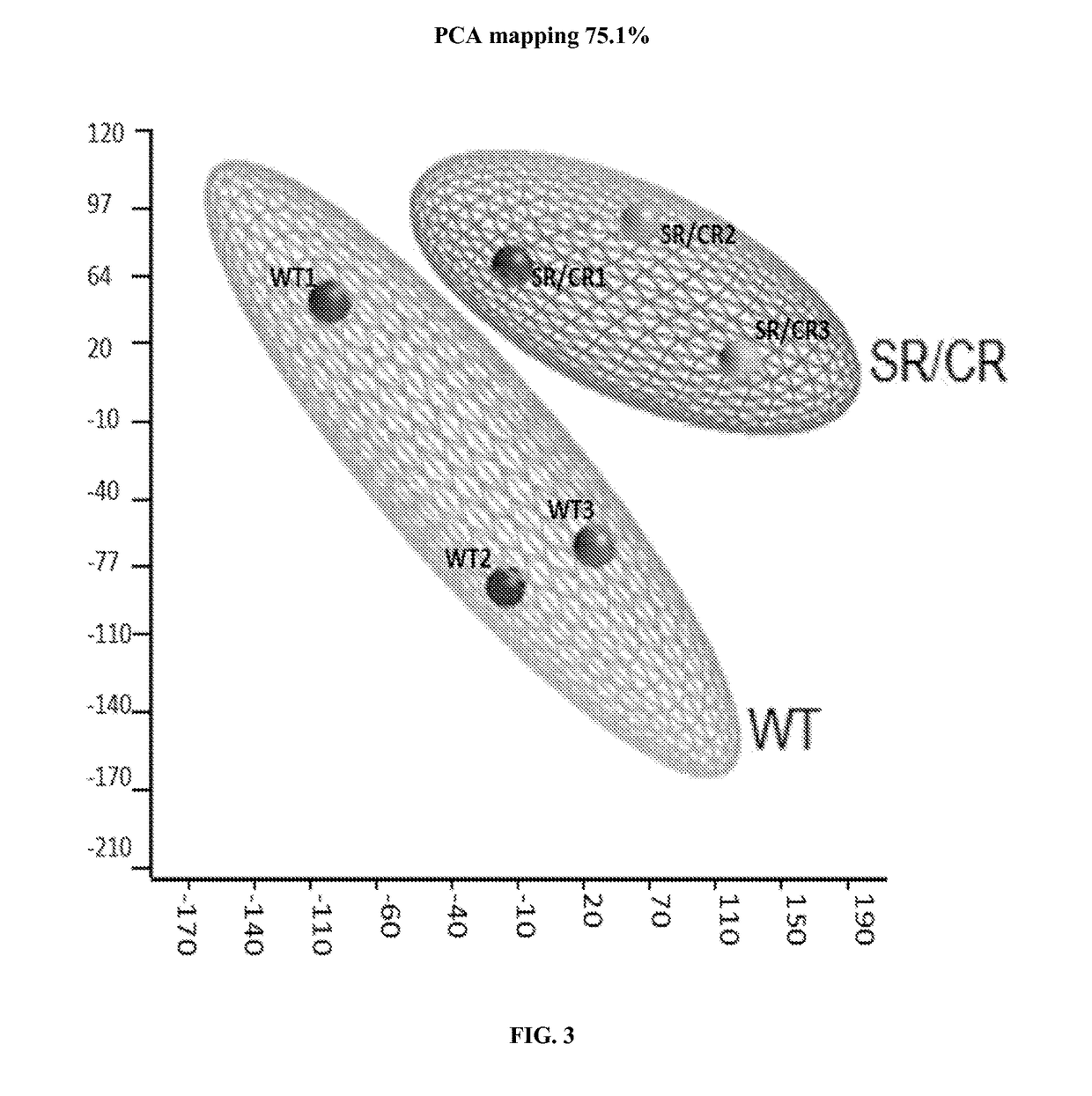Innate immune system modification for anticancer therapy
a technology of innate immune system and anticancer therapy, which is applied in the direction of immunological disorders, antibody medical ingredients, peptide sources, etc., can solve the problems of inability to administer, extraordinarily expensive, and inability to identify the key genes responsible for the phenotype, and achieve the effect of reducing the number of cancer cells
- Summary
- Abstract
- Description
- Claims
- Application Information
AI Technical Summary
Benefits of technology
Problems solved by technology
Method used
Image
Examples
example 1
tome Analysis Revealed Candidate Genes Significantly Upregulated in the SR / CR Mice
[0186]Samples consisted of the following: ˜20 million neutrophils from naïve SR / CR mice (previously unchallenged with cancer cells) were compared to neutrophils from control littermates. Information was recorded on which samples belonged to i) cancer resistant mice and ii) wild type control mice. The transcriptome of three SR / CR neutrophil samples and three control littermate neutrophil samples were assessed via next generation sequencing (RNA-Seq using TruSeq protocol, Illumina, San Diego, Calif.), (FIGS. 2A-2B). 60 million reads were obtained from each sample (FIG. 1). The computational analysis highlighted candidate genes significantly upregulated in the SR / CR mice (FIG. 3). For instance, these results showed a significant upregulation in the Scavenger receptors, an altered expression of a receptor involved in chemotactic response, and a 45 fold upregulation in the nuclear receptor RORgamma. Based o...
example 2
and Expression of Mouse RORgamma Confers Cancer Killing Activity to In Vitro Derived Neutrophils
[0187]Lentiviral constructs were used to infect HF1-Hoxa9 myeloid precursor cells. The HF1-Hoxa9 cells were maintained in a precursor state as long as they were cultured in the presence of GM-CSF factor. Upon withdrawal of GM-CSF and culture in the presence of G-CSF, nearly 100% of the cells differentiated into neutrophils. These transgenic, differentiated neutrophils were used in cell killing assays where the neutrophils (suspension cells) added to wells containing adherent Renca cancer cells—after 48 hrs Crystal Violet staining would determine if there was any loss / clearing of the adherent cancer cells (FIG. 9). The only factor that had an impact on the adherent cancer cells (slowed growth and / or resulted in cell death of the adherent cancer cell line) was RORgamma. It was observed in the RNA-Seq data analysis that RORgamma was the only transcription factor that had both a statistically...
example 3
xpression of Mouse RORgamma Confers Cancer Killing Activity to in Vitro Derived Neutrophils
[0189]Inducible lentiviral constructs (pinducer21) were used to infect Hoxa9 HF1 myeloid precursor cells. Cells infected with this construct produce mRORgamma upon the addition of doxycycline and the activation of the constitutively expressed rtTA3 transcriptional transactivation protein (FIG. 10).
[0190]To differentiate the HoxA9 HF1 cell line into neutrophils, HF1 cells were maintained in standard growth media or washed with saline (FIG. 11A) and grown in the presence of 20 ng / mL of G-CSF for three days (FIG. 11B) or for six days (FIG. 11C). Cells were cytospun at indicated times and stained with Giemsa. The arrows shown in FIG. 11B indicate cells that clearly demonstrated multilobed nuclei characteristic of neutrophils.
[0191]Immune cells modified with pinducer21 Lentivirus RORgamma were able to reduce the number of cancer cells in an in vitro assay. Renca cells were allowed to adhere and gro...
PUM
| Property | Measurement | Unit |
|---|---|---|
| Fraction | aaaaa | aaaaa |
| Biological properties | aaaaa | aaaaa |
| Immunogenicity | aaaaa | aaaaa |
Abstract
Description
Claims
Application Information
 Login to View More
Login to View More - R&D
- Intellectual Property
- Life Sciences
- Materials
- Tech Scout
- Unparalleled Data Quality
- Higher Quality Content
- 60% Fewer Hallucinations
Browse by: Latest US Patents, China's latest patents, Technical Efficacy Thesaurus, Application Domain, Technology Topic, Popular Technical Reports.
© 2025 PatSnap. All rights reserved.Legal|Privacy policy|Modern Slavery Act Transparency Statement|Sitemap|About US| Contact US: help@patsnap.com



